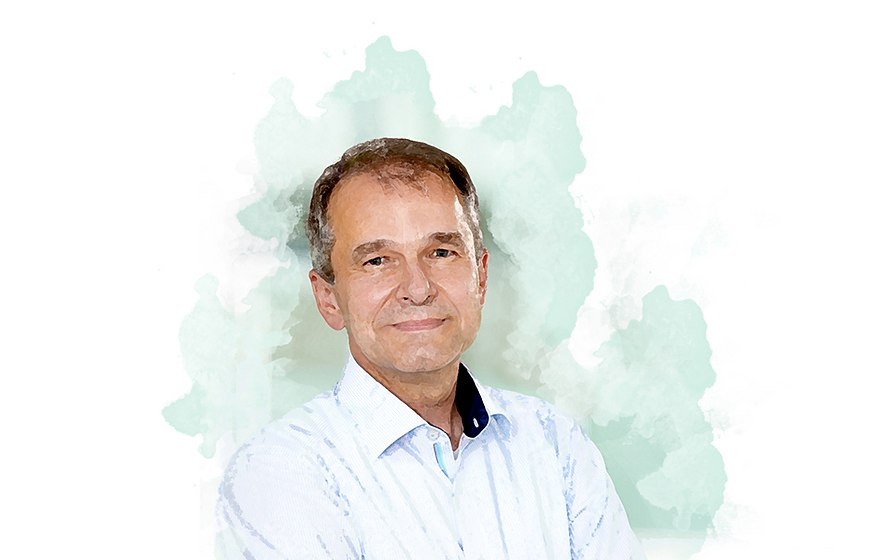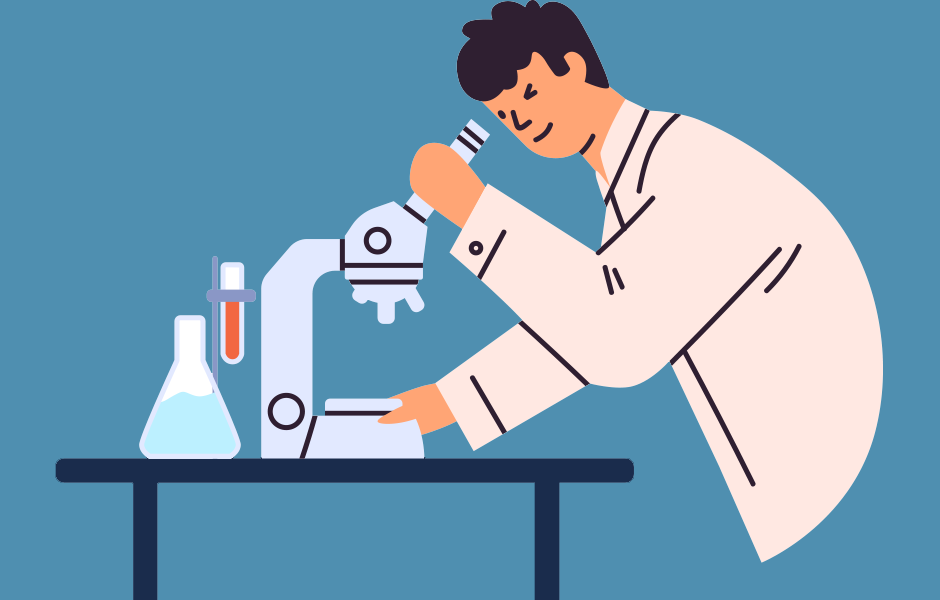Dr Ulrich Betz, Vice President of Innovation, Merck KGaA, talks about the evolution of R&D in the pharma space, the use of AI in pharma clinical trial models and fostering a creative team culture
Interview by GOLD
You have 20 years of experience in the pharma industry. Can you tell me about the evolution of R&D since you began?
When I initially started working in the pharmaceutical industry, there was a lot of hype around genomics. The human genome was just about to be fully sequenced, and there was this enthusiasm in R&D to find out what this meant for drug discovery.
The industry thought they had discovered a breakthrough innovation engine – the industrialisation of drug discovery – with the promise of rapidly creating new drugs for all the new therapeutic targets discovered in the genome through running thousands of high throughput screenings. There was also a ‘patent boom’ for these potential new drug targets; sometimes patents were even written automatically overnight and submitted on a daily basis. However, despite these advances, the complexity of the human physiological system was greatly underestimated. Even today, we do not fully understand the exact mechanisms of action of many drugs, even established therapies.
Looking back, although significant leaps in scientific progress were seen with the development of genomics, the industry was not ready to fully automate drug discovery. It takes a long time to fully understand the pathophysiological processes and biology of a given target or drug.
You were the 2017 Gold Stevie Award Winner of R&D Manager of the year, a huge achievement. What is the key to effectively managing a department and leading innovation?
Creating innovation remains an art, rather than a science. For a company to truly adopt an innovative culture, you need a committed team of curious individuals with a clear vision. You also need a culture that gives individuals the space and time they need to be innovative – this does not come from overstretched employees with full schedules. It is also important that a company accepts failure and allows its team to learn and grow from it.
There is no ‘one size fits all’ master plan to create innovation; unchartered territory will need to be explored, and people will have to adapt and be opportunistic in what they find. Freedom should be given to individuals or teams to pursue an idea and to take ownership of that project. It is crucial to create an environment in which the entrepreneur can succeed, and project champions can fully invest in their work. If you show love, ownership, perseverance, and tough skin, you have the right attitude for success.
Your talk at eyeforpharma focused on how innovation and technology are the future of pharma. Could you give me your insight on artificial intelligence (AI), real-world evidence, and new clinical trial models regarding drug development?
The question we have to ask is: “Is it really different this time?” There are always reasons to believe that this time it is different – and yes, perhaps we will see exponential progress in AI soon. I think the big question is, how long will it take to see its full potential in the real world? I believe the role of AI is currently over-hyped, often by consultants who don’t necessarily have hands-on experience with how the technology really works. When you speak to technology researchers about AI, interestingly they do not seem as confident in its ability as someone in the commercial world.
That being said, I am a believer of cognitive computing; however, I am unsure whether the impact of AI will really materialise as predicted in the next 5 years or so. Real-world evidence is revolutionary in going beyond the traditional clinical trial model and has been empowered by the digital revolution. It is one of the most important game changers and the pharma industry needs to be utilising real-world evidence from the R&D process up to marketing and patient engagement.
Then the third point you mentioned – new clinical trial models are a lot more flexible, which saves on time of drugs being delivered to market; some drugs are now being approved after Phase I trials. There are also discussions around staggered approvals instead of one launch date.
I would like to highlight some other new comings such as the microbiome – using bugs as drugs – which opens the potential for a completely new class of drugs. Electroceuticals are also emerging, essentially swapping drugs for devices, where electrical impulses would be able to stimulate certain nerve fibres. I think these are very exciting.
Do you think it will be difficult for a traditional and heavily regulated industry to consider adopting new technologies?
Certainly, pharma is a heavily regulated industry, but this also protects us to a certain extent from new entrants. Regulators need to be presented with sufficient content and knowledge, giving larger, more experienced and established pharmaceutical companies an advantage. Regulators are becoming more flexible, for example we have fast-track approvals now. That said, it will be a challenge for the innovations department if the strong regulatory burden continues and restricts progression in technology and innovation. The progress in computers, electronics, and communications has been a lot faster than the progress of medicine, and I imagine it will continue to be so.
It helps that we get collaboration from both pharma and the regulators, and in addition we are getting collaboration from patients to support progress with innovative drugs. An example is a drug for multiple sclerosis from Merck that wasn’t initially approved; however, after getting more data and support from patients, the drug was finally approved.
In a department where success isn’t solely measured by revenue, how do you effectively measure return from pharma innovation?
I like the saying: “Innovation is the ability to transform ideas into invoices”. That said it’s hard to convince people to invest in your department if your only KPI is measured 10 years down the line. As a result, we have earlier KPIs along the timeline that do not necessarily measure revenue. These include internal customer feedback; the number and quality of ideas produced; the papers published; the number of patents that are submitted; and stage gate advancements in the pipeline. I must say I am not the biggest supporter of measuring the success of innovation this way because very often it comes down to one breakthrough idea that will pay for years and years of trial and error.
Pharma is a rapidly changing industry. How do you, at Merck, Germany, create a culture that allows ideas to develop organically and for people to think creatively, yet maintain pace and intensity?
Based on activities from my department, we initiated a series of idea collection projects. Innospire, short for innovation and inspiration, is a project in which employees can present an idea they have. They will get support in designing a business plan for their idea, and then they will pitch that idea to management.
Then we have the ‘Innovation Cup’, where we invite talented students from around the world to come to a 1-week workshop at Merck, Germany. The attendees are teamed with Merck retirees and we create a cross-generational and highly diverse environment, where ideas are brainstormed and developed into full project plans. These project plans are then pitched at the end of the week to a jury that allocate a winner along with the €20,000 Innovation Cup. The best ideas are then implemented at Merck and we also use the Innovation Cup to recruit young talent for the company.
It is a great way to find individuals who are able to think creatively and push forward in a limited amount of time. Last but not least, we went live with a series of special open innovation offers, including 350th anniversary research grants that can be found at 350openinnovation.merckgroup.com. These are just some of the ways we at Merck encourage innovation in our day-to-day business.
Do you think that key buy in from the top is essential to fully implement and embrace an innovative mindset?
You need to convince management that the proposed idea is worth investing in, and experienced management doesn’t only invest in the idea, they also invest in the team who pitched the idea. People need to buy your idea, and you as a person, to make it a success in the end.
There is also a concept called ‘stealth innovation’ in which projects are pursued below the radar screen; there are some great examples of blockbuster drugs that would not be on the market without stealth innovation. This mode, however, is only possible in earlier project phases; ultimately you need to find allies and support.
There is one problem currently in pharma: the total running time of a project is usually longer than the employment time of top management. If there is no continuity it can be very bad for the productivity of a company if each management shift involves a change in direction.
As the founder of the Merck Innovation Cup, you evidently have a passion for educating and inspiring innovation in individuals who are starting out in their career. If you could give any advice to a younger you, what would it be?
My first piece of advice would be to not underestimate the power of networking. We are all still cavemen and cavewomen deep in our hearts, and we still rely on personal connections. Over years, I’ve realised an important question to ask yourself: “Who can I really trust?”, and the people that you can trust are those who will go through the fire with you, if necessary, to see a certain project through to completion. You need a supportive network to make an idea reality and fresh ideas flowing from people in different networks and industries.
The second piece of advice I would give is to avoid time thieves. The time we are given in life is limited and precious. No matter what you do or how much money you have, time is a non-renewable resource.
Thirdly, pay attention and focus on what stays. In companies we often see a trend one month, which is then replaced with another the month after. Be selective and careful with what you spend your time on. Choose to spend your time on something that you really believe adds value to your mission.









